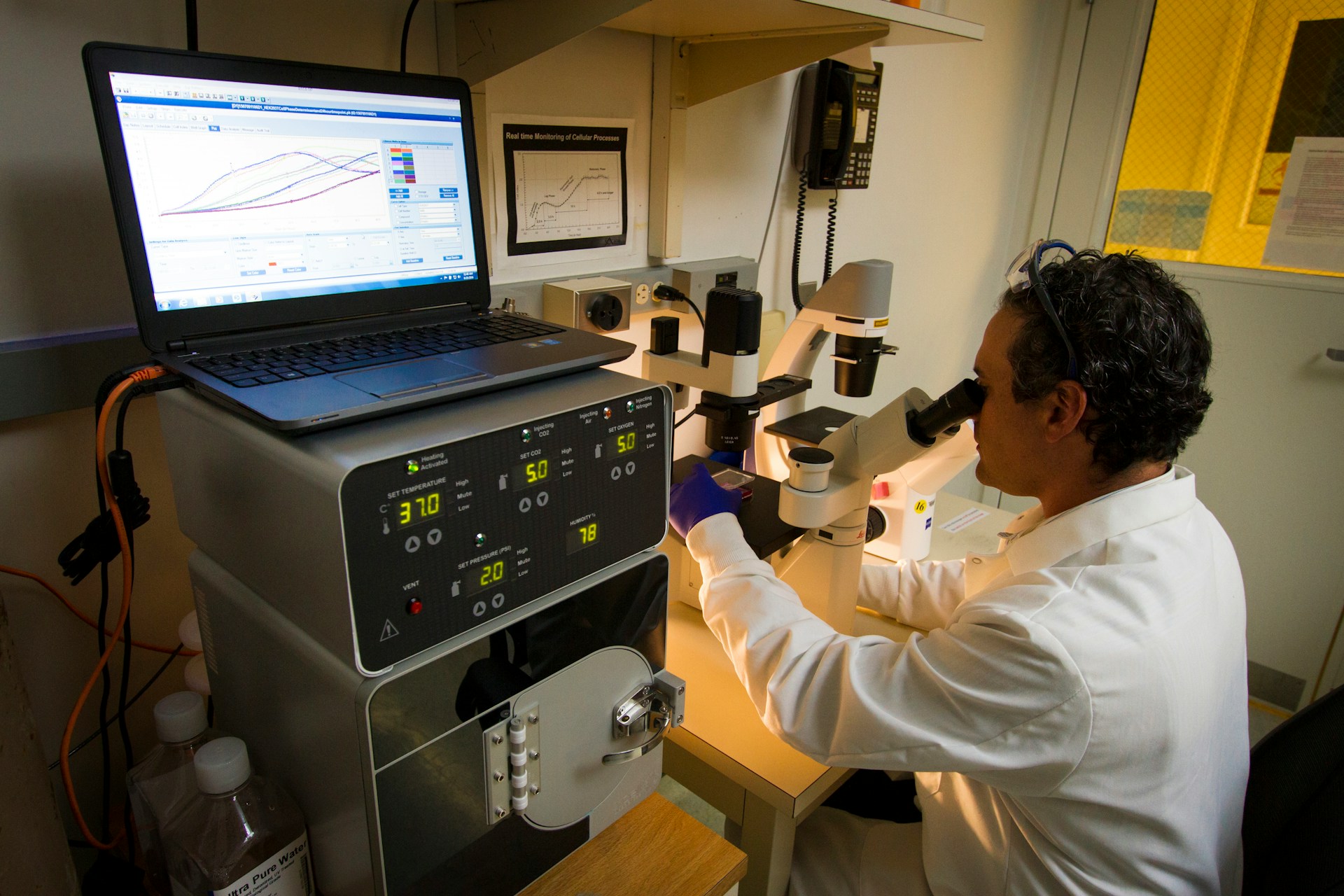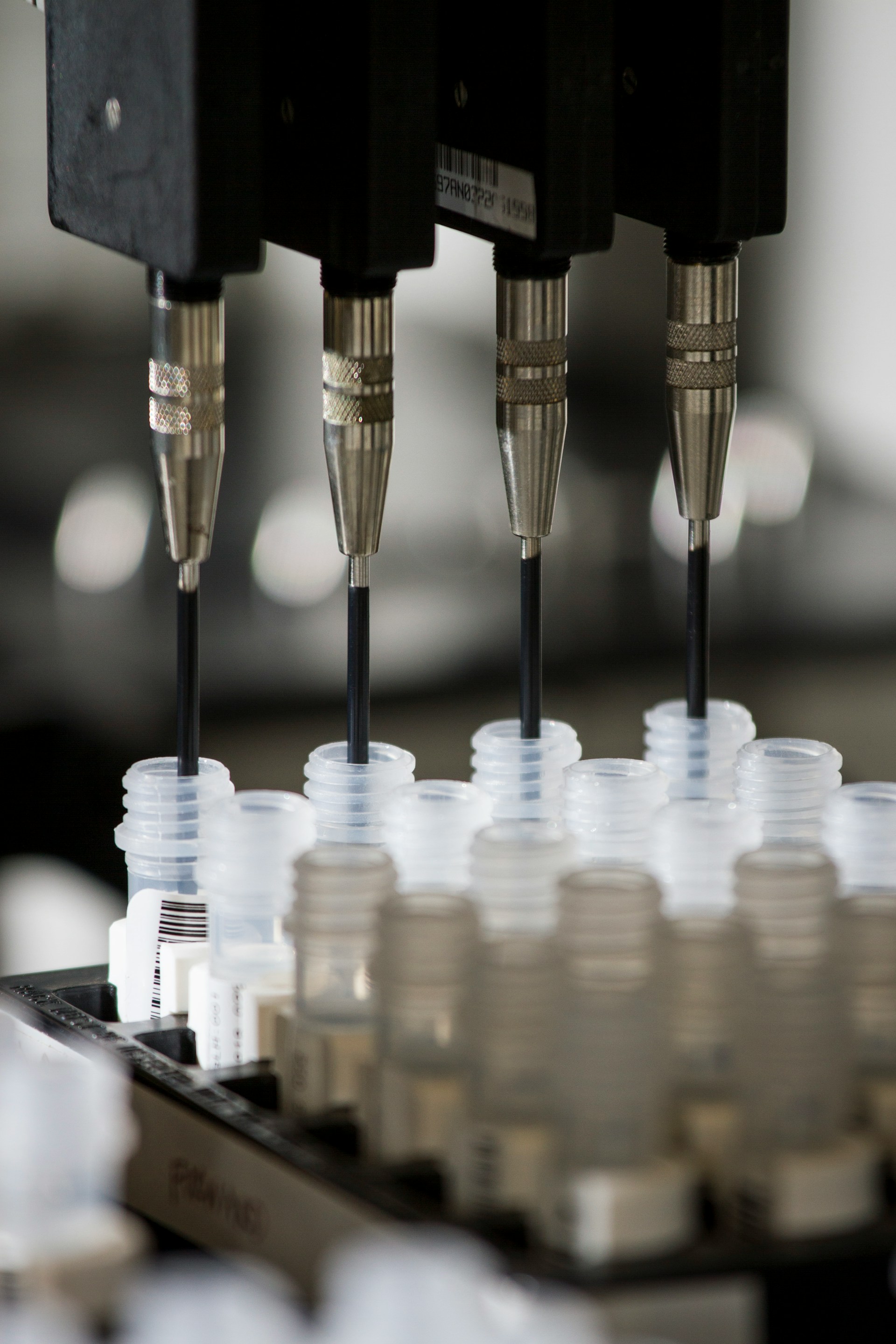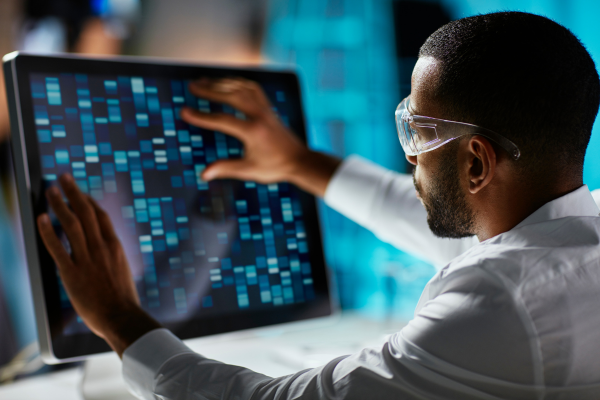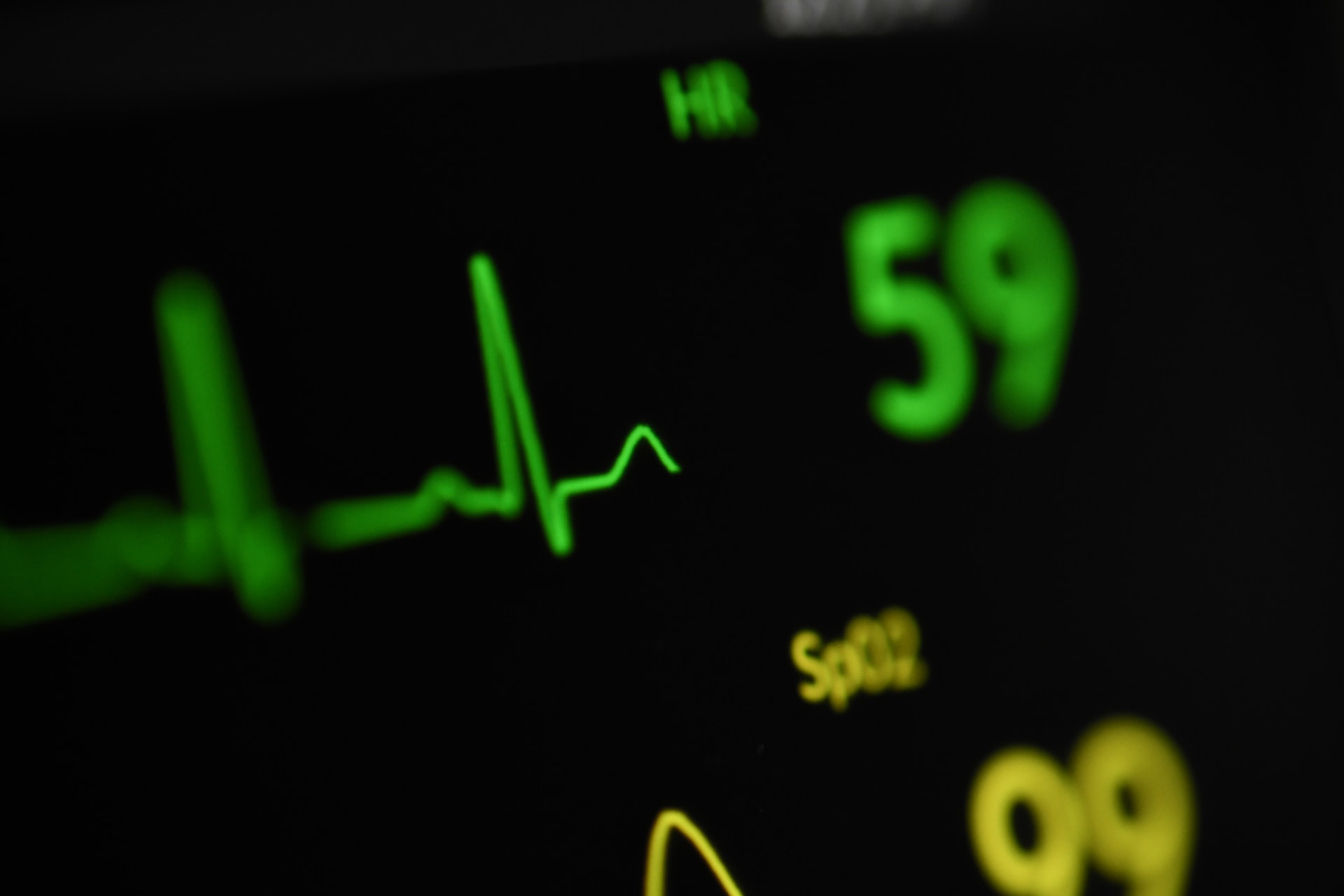Insights
The Top Life Science Companies Utilising Biometric Data in 2024
15 Jan, 202411 minutesBiometrics is assisting the development of medical technologies and treatments, especially a...

Biometrics is assisting the development of medical technologies and treatments, especially as the need for personalised care and information grows. Biometric technologies and data are helping out major life science companies to meet these changing needs. Recently, health and life science giants have begun to utilise the power of biometrics to enhance many aspects of their operations on a larger basis, from clinical trials to patient identification and progress tracking, ensuring privacy and developing medications.
Our previous discussions explored the 5 future trends in biometrics shaping the Health and Life Sciences field. This guide will now examine the uses of biometrics in health and life sciences, focusing on the top innovative life science companies that are utilising these technologies to develop new medical drugs, treatments, and devices.
The five life science companies we will focus on are-
- Johnson & Johnson
- Novartis
- Amgen
- AstraZeneca
- Roche
Why use Biometrics in Life Sciences for Medical Advancements?
Combining biometrics and the medical industry results in a powerful collaboration that is revolutionising healthcare. This is supported by the extent of the global healthcare biometrics market, which by 2030 is estimated to be valued at USD 30.08 billion. Skilled industry professionals are consistently discovering and developing innovative ways that biometrics can be used to support progression in medicine and life sciences.
Biometrics usually involves the statistical analysis of unique physical or behavioural characteristics for identification and authentication purposes. For health and life sciences, biometrics and biometric data can assist in:
- Disease diagnosis and monitoring
- Research and drug development
- The optimisation and streamlining of clinical trials, including data collection
- Tailored patient care
- Improved data security
- Detecting disease predisposition through the analysis of biometric data
- Reducing clinical errors
Continuous technological development, the need for more personalised treatments and the rise in data magnifies the importance of utilising biometrics and biometric data in life science research.
Top Life Science Companies Innovating with Biometrics
Innovative companies are utilising biometrics and biometric data to support the continuous development of cutting-edge healthcare and life sciences solutions.
Utilising biometrics, these companies are at the forefront of progress in patient care, research, and diagnostics. From continuous real-time monitoring to tailored medicine, they play a crucial role in utilising biometric data to facilitate a new era of effective healthcare.
But which life science companies will be at the forefront of this innovation in 2024? Let's delve into how these leaders are making significant strides in integrating and applying biometrics to improve health and life sciences.

Johnson & Johnson (J&J)
Johnson & Johnson is a multinational corporation aiming to produce innovative pharmaceuticals and medical devices while improving medical access for as many customers as possible. Johnson & Johnson is widely recognised for creating numerous popular healthcare products in the healthcare and pharmaceutical industries, including Band-Aid, Tylenol, and Listerine.
J&J reinforced their reputation as a household brand during the COVID-19 pandemic, harnessing its resources and data to contribute towards the vaccine program.
While not traditionally known for using biometrics like other health and life science tech giants, J&J has quietly incorporated biometric technologies into its research, development, and products since the mid-1980s. By the turn of the millennium, J&J had begun incorporating biometric sensors into their medical devices and tools.
But how exactly are J&J leveraging biometrics and biometric data? The section below will explore how this healthcare giant combines biometric technologies with biology to develop their recruitment, security, patient care, and services.
How does J&J use biometrics in medical advancements?
Committed to utilising cutting-edge technologies to improve healthcare globally, this innovative life science company has since been harnessing biometrics and biometric data to streamline clinical practices, data processes, and personalise medical care.
Clinical Trial Recruitment and Screening
Biometric data have been used in clinical trials for decades, but J&J has recently taken this further, focusing on the trial data and the recruitment and screening process.
J&J's pharmaceutical division, Janssen, uses facial recognition software to streamline clinical trial recruitment. The software helps researchers identify and match potential participants based on specific facial features associated with certain demographics or health conditions. This can significantly improve the accuracy and efficiency of finding suitable trial candidates, ultimately speeding up the drug development process.
Personalised Treatment Options
A significant benefit of combining biometrics with healthcare is that it allows life science companies to tailor their treatments and medication to patients using biometric data. J&J's pharmaceutical research leverages genetic and biometric data to develop personalised patient treatment plans. By analysing individual genetic profiles and physiological responses, researchers can identify patients more likely to respond positively to specific medications or treatments.
This personalised approach can enhance treatment results and minimise side effects, benefiting patients and contributing to the ongoing development of medicine and medical devices.
Data Security
Life science companies must have policies and procedures to secure biometric data and sensitive project information. The development of biometric technologies in recent years has enabled organisations like J&J to step up their security policies.
They are known for using biometric technologies like fingerprint scanners and facial recognition to improve security and access control in their facilities and research labs. This helps protect sensitive data and intellectual property while streamlining employee access and authentication procedures.
Remote Patient Monitoring
The growing reliance on medical devices for patient monitoring has prompted life science organisations to develop devices capable of remote patient monitoring. The global remote patient monitoring market is continuously growing. By 2027, the market is expected to grow by a compound annual growth rate of 18.9%, racing towards a valuation of $3,244.9 million.
J&J are one of the life science companies basing its technological developments around this market. It leverages biometric data and technologies to create wearable remote patient monitoring devices.
J&J's medical device arm, Ethicon, has developed a suite of wearable biosensors and monitoring platforms for remote patient care. These devices, like the Ethicon Endovivid Platform, track vitals such as heart rate, temperature and respiration in real-time, allowing healthcare professionals to monitor patients remotely and intervene quickly if needed. This can particularly benefit patients with chronic conditions or those recovering from surgery.
Novartis
The Swiss multinational pharmaceutical organisation Novartis is one of the largest life science companies globally and operates across various activities within the medical sector. Their products and services reach over 250 million people. From pharmaceuticals and research to innovative therapies, Novartis continuously seeks to improve its offerings, utilising biometric technologies and data to extend and enhance the lives of the human race.
How Does Novartis Use Biometrics in Medical Advancements?
Since 2022, they have been focusing on finding life-improving medication and technologies for patients with Multiple Sclerosis, Alzheimer's disease, Parkinson's Disease, Epilepsy and ADHD. More recently, biometrics and biometric data have allowed Novartis to assess disease changes using monitoring techniques like digital biometric devices.
Let’s explore how biometrics support Novartis’s medical development activities in more detail below.
Clinical Trials
Biometric wearable devices and sensors can track health data like heart rate, respiration, and sleep patterns in real-time during clinical trials. This data provides valuable insights into medications' effectiveness and side effects, leading to more precise and personalised treatment approaches. Novartis also uses biometric sensors to track medication adherence by monitoring pill intake or injection administration, ensuring accurate data collection and improving trial outcomes.
Genetic and Biometric Insights:
Analysing individual genetic profiles and physiological responses using biometric data allows research professionals to tailor treatment plans to each patient, maximising effectiveness and minimising side effects. Novartis analyses genetic variations to identify mutations or susceptibility to specific diseases.
This allows them to:
- Target Treatments: Match patients with medications or therapies designed for their specific genetic makeup, increasing efficacy and reducing potential side effects.
- Predict Response: Assess how likely a patient is to respond to specific treatments, improving clinical decision-making and avoiding ineffective regimens.
- Incorporate Preventative Measures: Identify individuals at high risk for developing certain diseases, enabling early intervention and preventive strategies.
By using biometric data in this way, Novartis can gain valuable insights into how patients may respond to specific treatments, allowing for more personalised and effective medical interventions.
Trial Identification and Security
While this innovative life science company uses biometrics to streamline processes during clinical trials, it also works on optimising the authentication and identification process associated with clinical trials.
For example, Novartis utilises biometric information and technologies to uniquely identify an individual, including genetic data like ethnic origin and citizenship, enabling more precise and personalised data management. This approach not only enhances the efficiency of clinical trials but also ensures a higher level of accuracy in participant identification.
Clinical data needs to be protected and kept secure. As Novartis is an organisation that creates and develops various services, they utilise biometric authentication to secure sensitive data associated with clinical trials.

Amgen
Amgen is a leading biotechnology organisation aiming to discover, develop and manufacture innovative medicines and treatments globally. Since 1980, they have prided themselves on their skill and experience in the latest medical technologies.
In 2024, they are continuing their digital transformation journey, focusing on combining science with technology to deliver high-quality medication to patients. Their developments have reached over 100 countries and are most well-known for using living cells and biometric technologies to create medicines.
How is Amgen using biometric data?
Amgen invests in biometric research and has a dedicated biometrics team, consistently employing graduates to bring new and creative ideas to medicine. In 2023, they partnered with other life science companies to aid project development and bridge the gap between research and personalised medicine. Continuing into 2024, Amgen are increasing their biometric study, focusing on digital therapeutics, vital tracking and AI-powered risk assessments.
But how do biometric data and technologies apply to their different research areas? In the next section of this guide, we will explore this concerning drug development, treatment personalisation and clinical trials.
Drug Development
Biometric data analysis can identify potential disease biomarkers, aiding drug target identification and development. Amgen uses AI algorithms to analyse large genetic and biometric data datasets to identify potential drug targets and predict the efficacy of early-stage drug candidates. This data-driven approach can streamline drug development and lead to more effective treatments.
Using biometric data alongside other clinical information can help create predictive models for disease progression, treatment effectiveness, and potential side effects.
Amgen specialises in finding treatment paths for neurological and chronic illnesses and diseases and achieves this through the help of biometrics.
For example, their HeartSmart Connect platform connects patients with chronic heart failure to their specific healthcare providers through a mobile app and connected devices. Biometric data like weight, blood pressure, and medication adherence are monitored remotely, empowering patients to manage their condition actively and providing biometric data for future drug development.
Drug and Treatment Personalisation
Amgen invests in biometric research to improve patient's quality of life. Combining science and technology enables this life science company to personalise treatments better and monitor data remotely. By analysing individual genetic and biometric profiles (vitals), Amgen tailors the development of targeted therapies to patients' medical needs. This means medicine and treatments are being created with minimal side effects.
For instance, Amgen employs a dosing strategy guided by biomarkers in specific cancer therapies. By examining factors such as body weight and genetic variations specific to each patient, they customise medication dosages to enhance effectiveness and minimise side effects. This approach maximises the likelihood of success for medications and treatments.
Clinical Trial Innovation
Successful clinical trials are essential to Amgen’s research and development process. In recent years, the company have opted to invest in streamlining the clinical trial process using biometrics.
In 2023, Amgen collaborated with AliveCor to incorporate the KardiaMobile ECG device into a clinical trial for their cholesterol-lowering medication. Participants in the trial use the device to remotely track their heart rhythm, enabling researchers to collect real-time data without frequent clinic visits.
Amgen has also begun harnessing the power of biometric data and devices in clinical trials. Focusing on chronic conditions like migraines, the life science company has already started conducting virtual clinical trials for migraine medication using digital tools and wearable devices. In this process, biometric data like heart rate and sleep patterns are collected remotely, allowing for broader patient participation and improved data collection compared to traditional in-person trials.
AstraZeneca
After the Covid-19 pandemic, AstraZeneca has become one of the most recognisable life science companies globally. They specialise in finding innovative solutions to medical issues and developing new treatments for oncological, cardiovascular, respiratory and metabolic problems. This life science organisation actively supports biometric research, employing a dedicated and sizeable biometric team to inform their decision-making process.
Let’s explore AstraZeneca’s fusion of data and science in more detail below.
How Does AstraZeneca Use Biometrics in Medical Advancements?
As a biopharmaceutical company driven by scientific principles, AstraZeneca employs biometric data throughout both the early and late phases of clinical development to enhance clinical programs and advance scientific understanding. Their main objectives include transforming drug development, refining clinical trials, and customising patient care.
With the increasing focus on using biometric data to inform better decision-making, AstraZeneca has focused on increasing patients’ quality of life:
- Genomic data: Identifying patients most likely to benefit from specific treatments.
- Imaging data: Monitoring disease progression and treatment response.
- Wearable device data: Tracking patient activity levels and sleep patterns.
- Patient-reported outcome data: Evaluating symptoms and assessing overall quality of life.
Below, we will discuss how AstraZeneca is leading the charge in leveraging biometrics for medical treatment and device development.
Streamlining the Clinical Trial Process
The process of all stages of clinical trials can be time-consuming. Every delay prevents the development of medication and medical devices that are needed. Recognising the urgency, AstraZeneca dedicates significant effort to leveraging biometrics to optimise and streamline its clinical trial processes. By incorporating biometric markers like heart rate and blood pressure, the pharmaceutical company optimises sample size, filtering the number of participants required for trials.
This strategic use of biometric data saves time and resources and ensures that AstraZeneca's innovative developments reach the public and the medical industry as quickly as possible.
In a specific example related to a Parkinson's disease drug trial, AstraZeneca successfully employed fluctuations in heart rate variability as a biomarker. This method predicted disease progression and assisted in determining the minimum number of participants required for the trial, highlighting the practical impact of their biometrics-driven strategies in the real world.
Treatment Tailoring
In recent years, AstraZeneca, like other life science giants, has recognised the importance of personalised treatments tailored to the individual. Biometrics and biometric data have allowed researchers to act in this, increasing overall patient outcomes.
AstraZeneca, in particular, allocates dedicated time and employs a number of biometric roles to discover the powers of biometrics in medical science. Through the unity of biometrics and biology, this life science organisation harnesses biomarkers derived from biometric monitoring techniques. This enables AstraZeneca to advance the development of:
- The Lynparza treatment for ovarian cancer
- Tagrisso for non-small cell lung cancer (NSCLC)
- Imfinzi for advanced bladder cancer
A prime example of how AstraZeneca is utilising biometrics to personalise treatments is the development of ALROTYPI in asthma, which identifies five asthma subtypes by examining particular biomarkers. This enables the customisation of treatment plans according to the individual biological characteristics of each patient's asthma type.

Fusing Biometrics with Life Science Organisations: Final Thoughts
Biometric data is vital in revolutionising the healthcare landscape, with applications ranging from disease diagnosis and monitoring to personalised treatment options.
Combining biometrics and the life science industry represents an important alliance shaping healthcare's future. As we enter 2024, these life science companies are at the forefront of this innovation. These companies are not merely adapting to the digital age but are actively leading the charge in utilising biometrics for improving patient care, enhancing research and diagnostics, and streamlining clinical trials.
As we delve into how each company incorporates biometrics into their operations, it becomes evident that biometric data is a powerful tool, offering insights that contribute to more effective drug development, personalised treatments, and streamlined clinical trial processes. The combination of science and technology is launching the industry into a new era of efficient and patient-focused healthcare.
Are you looking for an Expert Biometric Recruitment Agency?
At Warman O’Brien, our consultants are experienced in placing professional talent with leading life science, research and pharmaceutical organisations. Since 2017, we have aided our candidates and clients throughout the recruitment process. We provide industry-specific knowledge, from applications and job listings to interviewing and onboarding, all aimed at supporting the future of biometrics.
Contact us today to learn more about how we can support you with your biometric recruitment needs.



